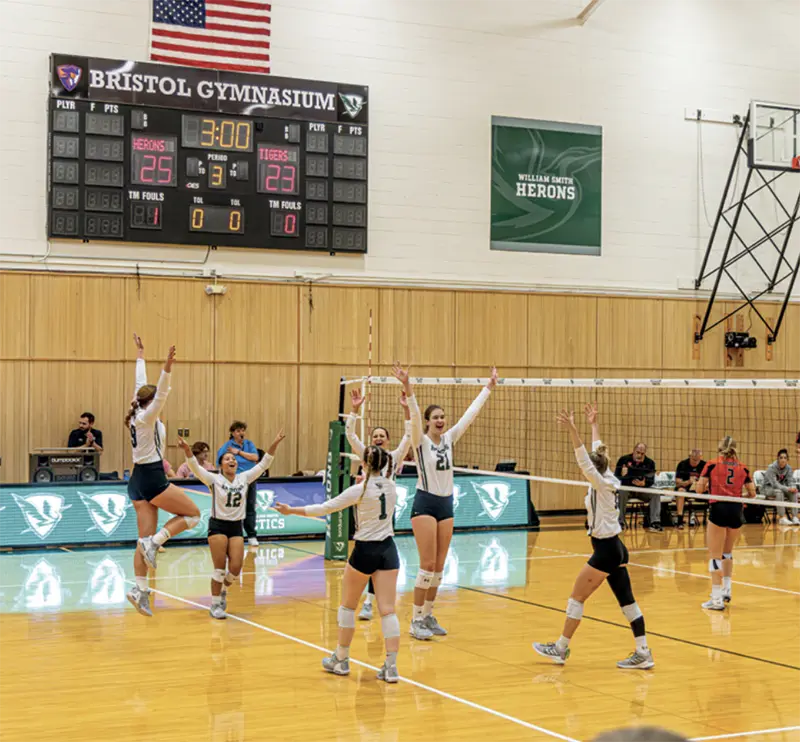The Pulteney Street SurveyWinter '24

The Herons celebrate during their win over the RIT Tigers during the fall. Hobart Volleyball begins its first season of play this winter.
Tech. Data. Volleyball.
HWS Volleyball is rethinking scorekeeping, stats and training with help from the Data Analytics program.
BY ANDREW WICKENDEN ‘09
Over the past decade, sports analytics capabilities have “skyrocketed,” says Hobart Volleyball Head Coach Steve England. Technology enables teams to translate players’ actions into an abundance of data in real time for shrewder decisions on the court, both in training and in matches.
“Instead of waiting until the end of the set to get the box score,” England explains, “we can make live, up-to-date decisions based on the data, which puts the team at an advantage.”
A new pilot program offers the Hobart and William Smith volleyball programs and student coders a chance to take advantage of this profusion of data.
When the Data Analytics minor was established in 2021, faculty were eager to create opportunities for students to apply the skills they develop in the classroom, and athletics seemed like an obvious place to start, says Professor of Geoscience Nan Crystal Arens.
Last spring, she and Professor of Geoscience Neil Laird connected with coaches to gauge interest and during the summer, worked with England to explore the benefits for students and the teams.
The collaboration yielded an independent study during the fall semester, with Natalie Haythorn ’24 gathering volleyball-specific data to “explore...where data analytics can be applied and used in an effective way.” Haythorn, who is majoring in Management and Entrepreneurship and double-minoring in Data Analytics and Sociology, says the venture has let her test project management skills and “connect what I have learned in the core classes.”
In the spring of 2024, the teams will be “the ‘client’ in the Data Analytics minor capstone, in which the students will analyze those data to answer whatever needs the coaches have and create a dashboard for them,” Arens explains. “I view this as a sort of pilot...the sort of thing we could do [on a broader scale] with suitable resources.”
England notes that the synergy between academics and athletics offers the teams “better statistical decisions based on the data we collect,” but it’s also a boon for students, both in terms of “earning credits and career opportunities: there are jobs waiting for students who know how to do this kind of coding and have an interest in athletics.”
